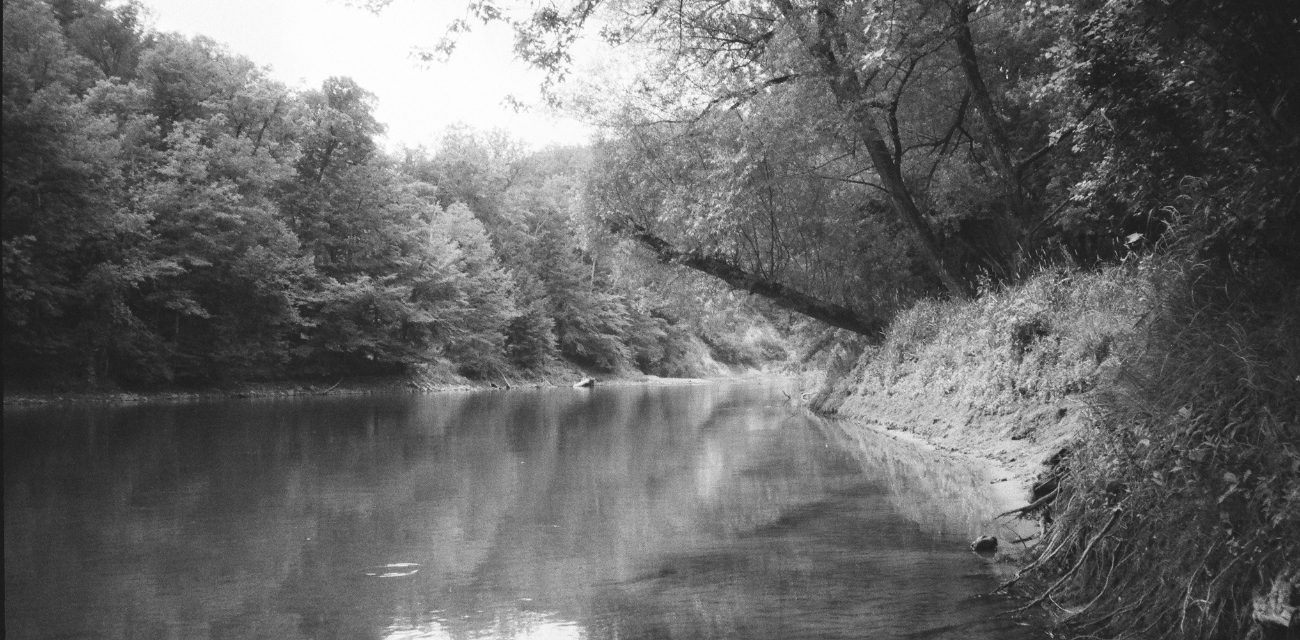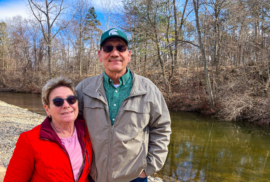When our rivers caught fire

John Hartig’s book chronicles fires on the horrifically polluted Rouge River and three others, and the public outcry that stopped them.
When Lake Erie – or more exactly the Cuyahoga River which flows into Lake Erie – caught fire in 1969, it ignited a firestorm of public outrage over the indiscriminate dumping of sewage and industrial chemicals into the Great Lakes.
But the incident was not particularly unusual. Nor was it the most significant of a long history of fires fueled by the thick oily sludges that fouled the Lakes and their arteries. The Chicago and Buffalo rivers also repeatedly caught fire. So did Michigan’s Rouge River.
“Burning Rivers – Revival of Four Urban-Industrial Rivers that Caught on Fire,” a new book by Michigan environmental hero John Hartig, chronicles the shameful and lasting damage done to the greatest rivers in the most spectacular freshwater ecosystem on our planet. More importantly, Hartig recounts the concerted and successful efforts to restore the rivers – not to their natural state, but at least within hailing distance of acceptable water quality.
For citizens and environmentalists worn down by the exhausting and seemingly fruitless battles to engage the public and policymakers in defense of our Lakes, the lesson is this: We’ve done it before. We can do it again.
Sign of prosperity
Hartig chronicles the rise of Great Lakes industrialization in the early and mid 20th century when the lakes and their tributaries were considered public sewers and waste disposal lagoons. “Industry was king,” he writes, “and dirty rivers were considered a sign of prosperity.”
Those questioning the wisdom of unrestricted discharge of feces, oils, solvents and industrial chemicals were labeled anti-progress wackos (sound familiar?) and politicians were loath to oppose the powerful industrial lobbies (again, ringing any bells?).
Fires on the Chicago River were so frequent they were community events. Spectators gathered on bridges like it was a Fourth of July celebration.
In Michigan, the fires were not as numerous or popular, but the thick oily sludges and rafts of human feces that obscured the Rouge River were no less contemptible violations of Michigan’s stewardship covenant with the greatest freshwater system on earth.
The Rouge is a serpentine system whose branches carve through huge swaths of Oakland and western Wayne counties, then merging to surge past the great industrialized shores of Dearborn and Detroit before discharging into the Detroit River upstream from Lake Erie.
Tracing the demise
“Burning Rivers” traces the demise of the Rouge from the arrival of the fur trappers and traders in the 1600s, walking readers through the near-extinction of the beaver, the establishment of open sewers flowing into the water and resultant disease epidemics of the 1800s, and Detroit’s first water treatment facility in 1879.
We learn how Henry Ford dammed the river to provide hydroelectric power to his mansion, and how the river was dredged to accommodate freighters bringing raw materials to the sprawling Ford Rouge Assembly Plant.
Hartig shows us graphically how oil sludge and industrial chemicals fouled the river so thoroughly that tens of thousands of oil-soaked waterfowl died in 1948. Furious sportsmen loaded them in pickup trucks and drove them to Lansing, dumping them on the Capitol lawn in protest.
In 1969, shortly after the notorious Cuyahoga River fire, the oil-matted Rouge River in Detroit caught fire, shooting flames 50 feet in the air and sending smoke billowing near the I-75 highway bridge.
“The 1969 Rouge River fire didn’t get much local media attention,” Hartig writes. “Most citizens accepted the fires as part of the industrial operations that brought jobs to the area.”
Oil and chemicals were only part of the collapse of the Rouge aquatic ecosystem.
Sewage, too
Adding to the industrial pollution was a torrent of sewage flowing into the Rouge and other waterways. Mats of dense fecal matter mixed with condoms and other unmentionables joined the oil sludge in a macabre cocktail of toxicity. In 1985, a 23-year-old man died from a rare parasitic waterborne disease (leptospirosis) after falling into the river and swallowing water.
This sewage issue was personal for Hartig, who grew up in an Allen Park home where nothing of value was ever stored in the basement: “Sewage would back up in our basement,” as a result of the inadequate system. The sewage “…created an odor problem and literally a public health hazard. We had to use muriatic acid to disinfect our basement.”
Hartig would devote his life to improving and protecting water quality. He formerly worked for the International Joint Commission on water quality issues and was the Detroit River Navigator from 1999 to 2004. Since then, he has been manager of the Detroit International Wildlife Refuge.
Despite progress, sewage backups and discharges to the rivers continue to be a problem in 2011, where every significant rainstorm overwhelms decades-old combined sewer systems that were built where fouled waters were considered a necessary byproduct of progress.
Forced to act
But even as the river was burning in 1969, public awareness was forcing politicians to act.
The era saw the establishment of Michigan’s first pollution control programs, including the Water Resources Commission, and a new rule requiring state approval for all new uses of Michigan waters.
Nationally, the landmark 1972 Clean Water Act signed by President Richard Nixon continues to be the primary law protecting the nation’s fresh surface water.
Hartig traces the political and social forces that led to improvements of the Rouge, Cuyahoga, Chicago and Buffalo rivers in the intervening years – and lays out the environmental, economic and public health benefits that result.
Lesson learned
The lesson of the rivers’ revivals isn’t that the job is done – no one in their right mind would want to swim in the Rouge River today – but that it can be done. We can make the Rouge – and the other impaired waterways – safe to swim and fish in again.
But it will require an engaged public that forces policymakers to give high priority to the world’s greatest freshwater resource. In Michigan, we’re the only state nestled entirely within this basin of freshwater seas. We stand to gain the most from such a commitment. And we stand to lose the most from indifference.
Here’s hoping we do not have to wait for another series of river fires to get our attention.
Discover
Power environmental change today.
Your gift to the Michigan Environmental Council is a powerful investment in the air we breathe, our water and the places we love.
Sign up for environmental news & stories.
"*" indicates required fields




